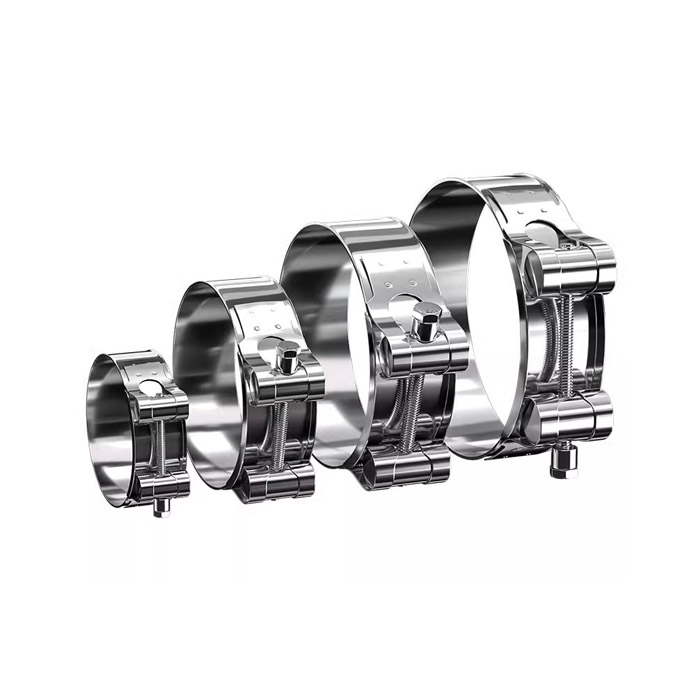- Phone:+86-17331948172 +86-0319-8862898
- E-mail: inquiry@puxingclamp.com
ធ្នូ . 14, 2024 16:44 Back to list
Automotive AC Hose Clamp Manufacturing and Supplier Insights for Efficient Performance
Understanding the Importance of Auto AC Hose Clamps and Their Manufacturing
In the automotive industry, the air conditioning (AC) system plays a crucial role in the comfort of vehicle passengers. Among its many components, the AC hose clamps are essential yet often overlooked parts. These clamps are critical for securing the hoses that transport refrigerant throughout the system, ensuring efficient cooling performance. In this article, we explore the significance of auto AC hose clamps, their manufacturing processes, and the role of factories in their production.
The Role of Auto AC Hose Clamps
Auto AC hose clamps are designed to hold the hoses that carry refrigerants securely in place. This is vital for maintaining the integrity of the AC system, as any leaks can lead to a decrease in cooling efficiency. A properly functioning AC system is not just a luxury; it is become an essential feature for modern vehicles, particularly in regions with extreme temperatures. When the system can operate without leaks, the vehicle runs more efficiently, which can positively impact fuel economy and reduce the likelihood of costly repairs.
Moreover, the reliability of an AC system is directly linked to the quality of the components used in its construction, including these clamps. High-quality hose clamps can withstand vibrations and thermal expansion, ensuring they do not loosen over time. This stability is crucial for long-term vehicle performance and passenger comfort.
Manufacturing Auto AC Hose Clamps
The manufacturing process for auto AC hose clamps involves several steps, each requiring precision and quality control. Typically, these clamps are made from durable materials such as stainless steel, which provides corrosion resistance and strength. The process generally includes
1. Material Selection Factories begin by selecting high-quality raw materials. The choice of material significantly impacts the durability and performance of the clamps.
2. Cutting and Shaping The selected materials are cut into specific sizes and shapes based on design specifications. This step may involve various techniques, including laser cutting, to ensure accuracy.
3. Forming After cutting, the clamps are formed. This involves bending and shaping the material to create the correct profile that allows it to securely grip hoses.
auto ac hose clamps factories

4. Coating To enhance corrosion resistance, clamps may undergo a coating process. This can include galvanization or painting, depending on the desired finish and application.
5. Quality Control Rigorous testing is conducted to ensure that the clamps meet industry standards. This includes assessments of strength, durability, and performance under different conditions.
6. Packaging and Distribution Once the clamps pass quality control, they are packaged for distribution to automotive manufacturers, repair shops, and aftermarket suppliers.
The Role of Factories in the Production of Hose Clamps
Factories specializing in the production of auto AC hose clamps play a pivotal role in the automotive supply chain. They utilize advanced manufacturing technologies and automation to enhance efficiency and reduce production costs. This ability to scale and adapt quickly to changing market demands is vital in a competitive industry.
Additionally, many of these factories implement lean manufacturing principles to minimize waste and optimize resource utilization. By focusing on continuous improvement, they can maintain high quality while also reducing environmental impacts.
Moreover, as vehicle technology evolves, factories must adapt their production processes to accommodate new designs and materials. With the rise of electric vehicles and advancements in HVAC technology, there is an increasing need for innovative clamp designs that can handle higher pressures and temperatures.
Conclusion
Auto AC hose clamps may seem like small components in the grand scheme of automotive design, but their importance cannot be underestimated. They are vital for maintaining the efficiency and reliability of a vehicle’s air conditioning system. The manufacturing process behind these clamps involves careful material selection, precision engineering, and stringent quality control, all of which are crucial for producing reliable products. As technology continues to advance, the factories that produce these components will play a fundamental role in meeting the evolving demands of the automotive industry, ensuring that drivers and passengers enjoy a comfortable ride in any climate.
-
Heavy Duty Hose Clamp – Durable Stainless Steel Clamps for Industrial Use
NewsJul.28,2025
-
Premium Stainless Steel Hose Clamp for Automotive & Industrial Use
NewsJul.27,2025
-
Heavy Duty Hose Clamp – Durable Stainless Steel Automotive Tube Clip
NewsJul.26,2025
-
High Quality Precision Stainless Steel Strip for Industrial Use
NewsJul.25,2025
-
Black Rubber Hose Clamp with Rubber Lined & Insulated Design for Secure Fitting
NewsJul.24,2025
-
High Quality Steel Stainless Midsole for Safety Shoes Supplier
NewsJul.23,2025




